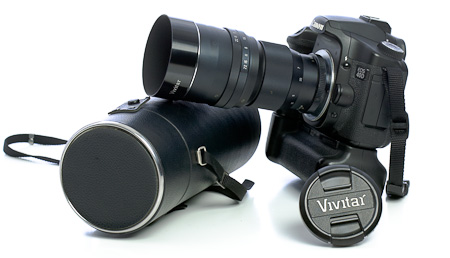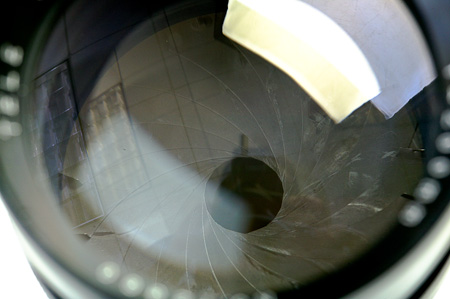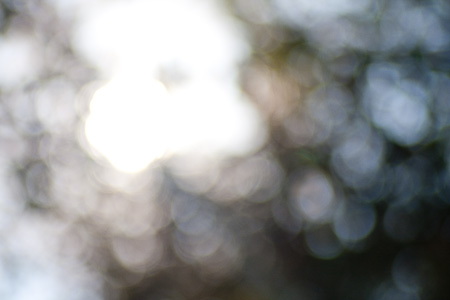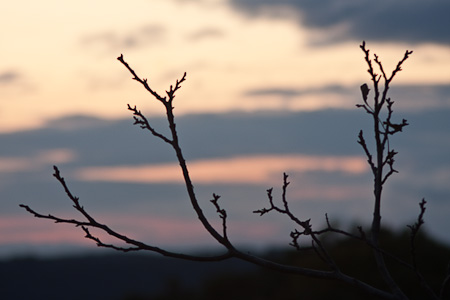
Vivitar 200mm f3.5 Preset Telephoto -Gausian Blur Machine |
||
|---|---|---|
|
||
| Specs: Mfg. approx. 1963 Manufacturer: Most likely Komine (or Kominar), Japan. Max app. f3.5 67mm filter thread 18 aperture blades (provides excellent bokeh). M42 screw mount, mated to an M42/EOS adapter ring |
 |
|
I don't have much information regarding the origination of this lens. Vivitar did not manufacture their own lenses, hiring third party vendors instead. The only lens that meets the above specs belongs to Tamron, but that lens looks different, and I cannot find a connection between the two companies.My internet searches led to me believe that NITTOH KOGAKU of Japan was most likely the manufacturer (known as Komine, also selling their own brand "Kominar", whom are still in business today). If you look on their historical page, you will note that they were restructured in 1943 to work in concert with a company now known as the Nikon Corporation. Vivitar is known more for their Series 1 lenses, utilizing several manufactures, of which the Tokina, Komine and kino versions are the most sought after. I won this lens on ebay for $66, and upon receiving it, was utterly amazed at it's like new condition. I swear it was unopened box. The lens also came with a rare 67mm Vivitar metal lens hood, and Vivitar pinch lens cap. Although this lens is all metal construction, its no more heavier than say a 135 f2L, and easily hand holdable, (which is why I think it lacks a built in tripod collar). Another neat feature is the pre-set ring. There are two rings on the barrel that control the aperture blades. One ring allows you to pre-set the desired f-stop, while the second ring is used to for closing down the aperture to that setting. This would allow you keep the aperture wide open for focus and framing, and then easily turn it down before taking the shot. It's takes a bit to learn it, but the stop down ring is very smooth and easy to work with. The focus ring (on this model) is stiff and requires relubing. However, I opted to leave it alone until after I've shot some images with it (in case I wind up doing more harm than good in the process). Now about that 18 bladed aperture.. yes, 18 blades to maintain absolutely perfect circular bokeh: .
When used wide open at f3.5 I will be first to admit that this lens is not a sharpness king. Stopping down to f4 and things start to sharpen with good center sharpness at f5.6. I will also declare that sharpness alone is not the only trait that qualifies what a good photo should be. Because this lens is soft at the widest aperture, and the bokeh is very uniform and smooth, it creates images that are more suitable for portraits and non-sharp objects, (Not everything in the world is hard and sharp).
Portraits at 200mm (especially 320mm on 1.6x crops sensor) are not ideal unless the distance to the subject dictates a need for such reach. Considering that at a minimum, for hand holding, you need a at least 1/250 second for shake free shots, it becomes apparent that high ISO values, 800-1600 are required for average or dim lighting. Any real tack sharpness will be lost in the shot anyway. It's certainly a mid-day or outdoor lens. Another issue is the lack of coating. I'm unable to determine if this lens is even a single coat. It flares or loses contrast quickly when shot towards the sun. The hood is a must, and shooting from the shade, or creatively framing to cut down direct sunlight helps. In shooting with this lens, and like all prime lenses, you are forced to think in terms of the lens' limits and focal length. In doing so, I found it a pleasure to use, and the unsharp images (a term that I've read somewhere), it creates were a welcomed additional to my portfolio. Of course, add a tripod and set it to f8 and it's very sharp -but that's not what I'm after with this lens. -Keep Shooting |
||






